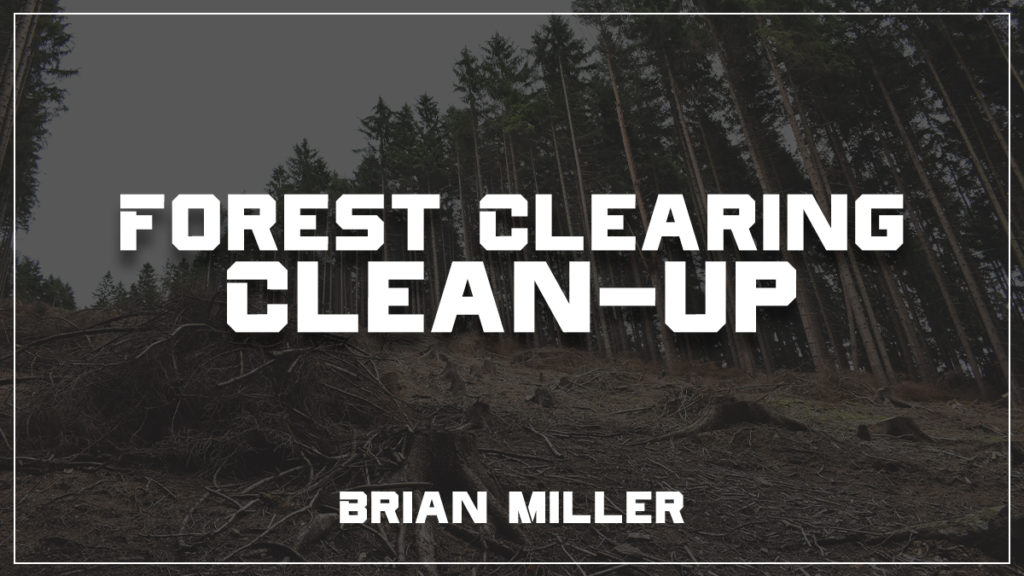Welcome back guys! Brian & Terry here with The Forest to Farm Project. Today we are going to take you through cleaning up the gigantic mess we made from clearing all the trees in the last post, haha.
One thing to keep in mind when you’re taking on a project like this; unless you are piling up the tree debris to burn, are hauling it yourself or paying someone to haul it off or have a gully to dump it into to let it rot away, you have to have somewhere to store it all until you can process it.
These photos are only a small portion of the debris we had piled up.
Throughout this initial clearing we gathered enough debris to line up 600 feet of debris nearly eight feet tall. Because we kept accumulating debris as we went, we kept climbing on top of piles and jumping on it to pack it down so we could add more to those piles. This was a horrible idea, hahaha. When we did this, it caused the limbs to spiderweb together and made it extremely difficult to pull them out when it came time to chip. Many people ask why we spend this time processing this debris. It’s full of great nutrients for your land. If nothing else, you can shoot the chips back out over the ground you’ve cleared and let it compost there. It will help make the soil fertile and turn into great topsoil. Many yards here in the south are hard red clay base. If you look where people have mulched around their houses and trees in their yards, the soil is super fertile soil over a foot deep that is full of worms. Wood chips can greatly enhance an area that is being worked hard.
One thing to remember with this kind of work, clearing trees is a lot of work. Chipping them up is a whole other animal. Have plenty of water on hand, especially if it’s a summer day. Be prepared to have your butt kicked, haha. If you’re doing much chipping of large/long debris, you’ll get scratches, bruises, and hit by limbs a few times.
If you’re paying someone by the hour to do this and you’re helping them, or you’re renting a chipper and doing it all yourself, be sure to allot more time than you think it will take. It’s a very involved, labor intensive, process. Just hauling the debris piles to the chipper will wear on you after hours of work.
If you haven’t been doing much and then tackle something like this it will definitely take a toll on you. We had built up to it over a month or so of clearing trees, so we were used to long arduous days and it still wore us out running that chipper all day.
What’s amazing about chipping trees/debris is how little space it ends up taking up after everything is processed. You get less than a 1/3 the pile of what you started with. The, when it composts down, it’s even smaller. But it turns into a little pile of black gold as it fills up with grubs, worms, misc. bugs, and mycorrhizal fungi that process it down.
This photo is just one pile of chips we ended up with from the day of chipping. Once we moved them all into one pile, what started out as about 600 feet of debris was about 75 – 100 feet long, roughly 15 feet wide and about 12 feet tall. In an upcoming post, we’ll show you the different stages of woodchip decomposition and what the final product is like. If you already have an existing garden, you can spread it all out over that area and as it composts down it will become great soil that holds moisture while still draining off the excess. Once we get to establishing our gardens we will go into great detail on this process.
Coming up, we will take you through the operation of a wood chipper and also some chainsaw safety that could be very beneficial as you tackle your own projects. We hope you’ve enjoyed today’s post and come back soon! Thanks for stopping by!


